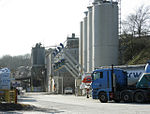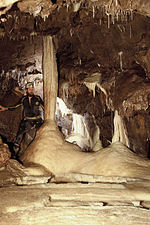Oakhill

Oakhill is a village in the Mendip district of Somerset, England, in Ashwick parish approximately 2.5 miles (4 km) north of Shepton Mallet. It lies between the A37 and the A367 (which is part of the ancient Fosse Way). Oakhill is today is mainly a commuter village of 0.4 square miles (1.0 km2) in size, and is notable for former activities which including brewing. The village contains a Church of England primary school and a surgery, as well as a public house, the Oakhill Inn. Little London is the name given to a cluster of houses at the western end of the village. It is sometimes referred to by tradespeople etc. as a settlement in itself for the purpose of location, because of the elongated character of the village.
Excerpt from the Wikipedia article Oakhill (License: CC BY-SA 3.0, Authors, Images).Oakhill
Bath Road, Mendip
Geographical coordinates (GPS) Address Nearby Places Show on map
Geographical coordinates (GPS)
| Latitude | Longitude |
|---|---|
| N 51.224 ° | E -2.523 ° |
Address
Oakhill Primary School
Bath Road
BA3 5AQ Mendip
England, United Kingdom
Open on Google Maps









